When is high fever dangerous. Understanding High Fever: When to Worry and How to Manage It in Children
What temperature is considered a fever in children. How can you measure a child’s temperature accurately. When should you seek medical attention for a child with fever. What are the best ways to manage fever at home. How does fever affect a child’s body and immune system.
Defining Fever: What Temperature is Considered Too High?
Fever is a common occurrence in children, but understanding what constitutes a fever and when it becomes dangerous is crucial for parents. Generally, a fever is defined as a body temperature of 100.4°F (38°C) or higher. However, the specific temperature that indicates a fever can vary depending on the method of measurement used.
Here’s a breakdown of fever thresholds based on different measurement methods:
- Rectal, tympanic (ear), or temporal artery (forehead): 100.4°F (38°C) or higher
- Oral (mouth): 100°F (37.8°C) or higher
- Axillary (under the arm): 99°F (37.2°C) or higher
It’s important to note that these numbers are general guidelines. The severity of a fever doesn’t always correlate directly with the temperature reading. A child’s overall condition and behavior are often more telling indicators of their health status.

Causes of Fever in Children: Understanding the Body’s Defense Mechanism
Fever in children is typically a sign that the body is fighting an infection. It’s a natural and often beneficial response of the immune system. The elevated body temperature creates an environment that’s less hospitable for pathogens, making it harder for them to thrive and multiply.
Common causes of fever in children include:
- Viral infections (such as the common cold or flu)
- Bacterial infections (like strep throat or urinary tract infections)
- Immunizations (as a temporary side effect)
- Overheating (particularly in infants who can’t regulate their body temperature efficiently)
In rare cases, fever can be a sign of more serious conditions such as autoimmune disorders or certain types of cancer. However, these instances are much less common and usually accompanied by other significant symptoms.
Can teething cause fever in infants?
While teething can cause a slight increase in body temperature, it rarely causes a true fever. If an infant’s temperature rises above 100°F (37.8°C), it’s more likely due to an unrelated illness and should be evaluated by a healthcare professional.

Recognizing Fever Symptoms: Beyond the Thermometer
While a thermometer provides an objective measure of fever, there are other signs and symptoms that parents should be aware of. These can help in identifying a fever even before taking a temperature reading:
- Warm or flushed skin
- Excessive sweating or chills
- Lethargy or decreased activity
- Decreased appetite
- Irritability or fussiness
- Headache or body aches
- Rapid breathing or increased heart rate
It’s important to remember that not all children with fever will exhibit all these symptoms, and the severity can vary. Some children may have a high fever but appear relatively well, while others might have a lower temperature but seem quite ill.
Should you be concerned if a child with fever doesn’t want to eat?
A decreased appetite is common during fever and isn’t usually a cause for concern as long as the child is staying hydrated. Encourage fluid intake and don’t force food if the child isn’t hungry. If the loss of appetite persists for several days or is accompanied by other worrying symptoms, consult a healthcare provider.
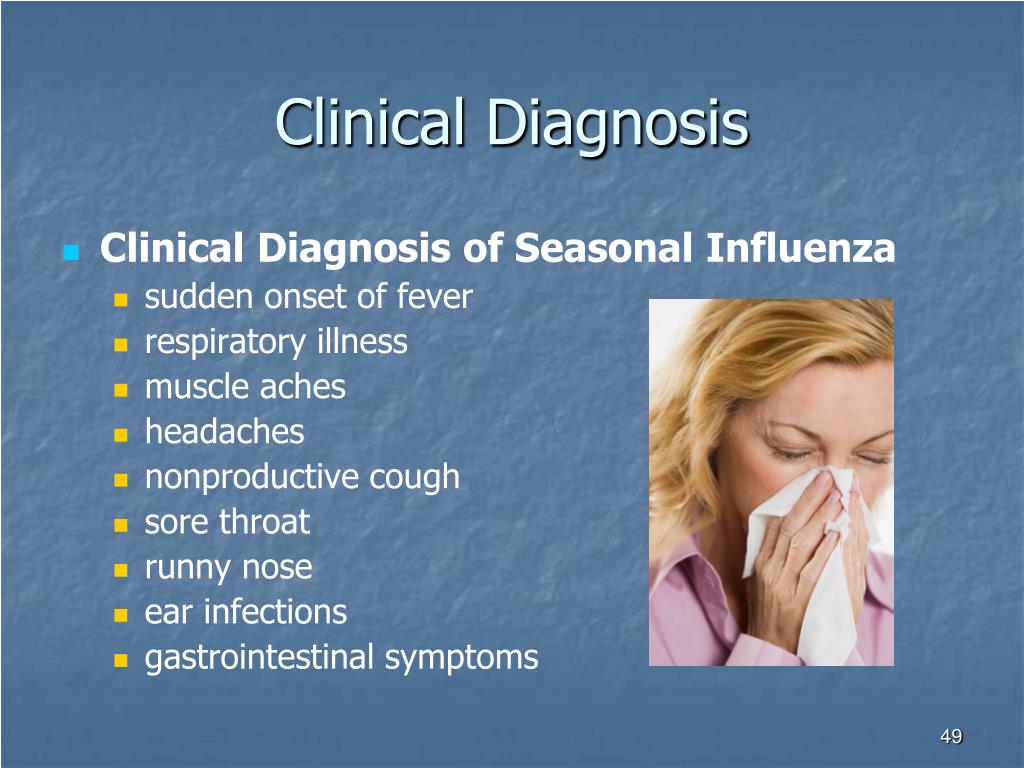
Measuring Fever Accurately: Choosing the Right Method
Accurate temperature measurement is crucial for assessing fever in children. Different methods are appropriate for different age groups and situations:
- Rectal temperature: Most accurate for children under 3 years old
- Oral temperature: Suitable for children 4 years and older who can cooperate
- Axillary (armpit) temperature: Easy but less accurate, suitable for any age
- Temporal artery (forehead) temperature: Easy and non-invasive, but may be less accurate
- Tympanic (ear) temperature: Suitable for children 6 months and older, but can be affected by ear wax or narrow ear canals
Digital thermometers are recommended for home use due to their accuracy and ease of use. Mercury thermometers should be avoided due to the risk of mercury exposure if they break.
How often should you check a child’s temperature during a fever?
For most fevers, checking the temperature every 4 to 6 hours is sufficient. However, if the fever is high or the child seems particularly unwell, more frequent checks may be necessary. Always follow your healthcare provider’s recommendations for your specific situation.

When to Seek Medical Attention: Red Flags for Fever
While most fevers in children are not dangerous, there are situations where medical attention is necessary. Here are some guidelines for when to contact a healthcare provider or seek emergency care:
- Infants under 3 months with a rectal temperature of 100.4°F (38°C) or higher
- Children of any age with a temperature above 104°F (40°C)
- Fever lasting more than 3 days
- Fever accompanied by severe headache, stiff neck, or confusion
- Signs of dehydration (dry mouth, sunken eyes, decreased urination)
- Difficulty breathing or chest pain
- Persistent vomiting or severe abdominal pain
- Fever in a child with a compromised immune system or chronic health condition
It’s always better to err on the side of caution when it comes to children’s health. If you’re unsure whether your child’s fever warrants medical attention, don’t hesitate to contact your healthcare provider for guidance.
Are febrile seizures a sign of a serious problem?
Febrile seizures, while frightening for parents, are generally not harmful and don’t indicate a serious underlying condition. They occur in about 2-5% of children between 6 months and 5 years old. However, if your child experiences a seizure for the first time, it’s important to seek medical evaluation to rule out other causes and receive proper guidance for future episodes.

Managing Fever at Home: Comfort Measures and Medications
When a child has a fever, the goal of treatment is to make them comfortable rather than to normalize the temperature. Here are some strategies for managing fever at home:
- Encourage rest and plenty of fluids to prevent dehydration
- Dress the child in light, breathable clothing
- Keep the room temperature comfortable, not too hot or cold
- Use a lukewarm compress on the forehead or back of the neck for comfort
- Offer popsicles or ice chips to suck on for hydration and cooling
If the child is uncomfortable or the fever is interfering with sleep or fluid intake, you may consider using over-the-counter fever-reducing medications:
- Acetaminophen (e.g., Tylenol) for all ages
- Ibuprofen (e.g., Advil, Motrin) for children 6 months and older
Always follow the dosage instructions on the package or as directed by your healthcare provider. Never give aspirin to children due to the risk of Reye’s syndrome, a rare but serious condition.
Is it safe to alternate acetaminophen and ibuprofen for fever control?
While some healthcare providers may recommend alternating these medications in specific situations, it’s generally not necessary and can increase the risk of dosing errors. Stick to one medication unless specifically instructed otherwise by your child’s doctor.

Fever Myths and Misconceptions: Separating Fact from Fiction
There are many myths surrounding fever in children that can lead to unnecessary worry or inappropriate treatment. Let’s address some common misconceptions:
- Myth: Fever is a disease itself.
Reality: Fever is a symptom, not a disease. It’s the body’s natural response to fight infection. - Myth: All fevers are dangerous and need to be treated with medication.
Reality: Most fevers are beneficial and don’t require treatment unless the child is uncomfortable. - Myth: Fever can cause brain damage.
Reality: Typical fevers (under 104°F or 40°C) do not cause brain damage. Only extremely high temperatures (over 107°F or 41.7°C) pose this risk, but these are very rare. - Myth: A child with fever should not be allowed to sleep.
Reality: Rest is important for recovery. There’s no need to wake a sleeping child to check temperature or give medication unless advised by a doctor. - Myth: Bundling up a child will “sweat out” the fever.
Reality: Overdressing can actually raise body temperature and cause discomfort. Dress the child in light, breathable clothing.
Understanding these facts can help parents manage fever with confidence and avoid unnecessary interventions.
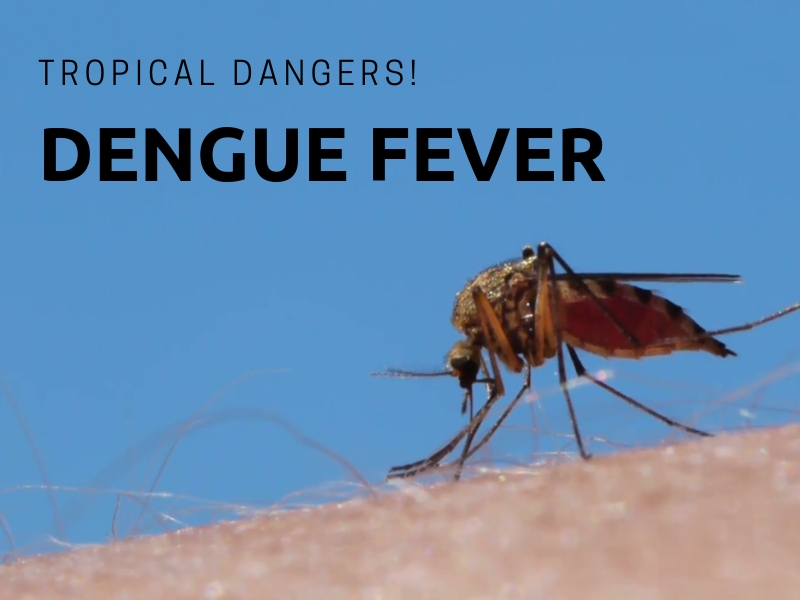
Does a higher fever indicate a more serious illness?
Not necessarily. The height of a fever doesn’t always correlate with the severity of the illness. A mild infection can cause a high fever, while a more serious condition might cause only a slight temperature elevation. The child’s overall condition and other symptoms are more important indicators of the illness’s severity.
Supporting the Immune System: Nutrition and Hydration During Fever
Proper nutrition and hydration play crucial roles in supporting a child’s immune system during a fever. While appetite may decrease, ensuring adequate fluid intake is essential to prevent dehydration and support the body’s healing processes.
Tips for maintaining hydration and nutrition during fever:
- Offer small, frequent sips of water, diluted fruit juices, or electrolyte solutions
- Provide ice pops or gelatin for added fluids and calories
- Serve easy-to-digest foods like soups, broths, and bland foods when appetite returns
- Avoid forcing food if the child isn’t hungry, but encourage fluid intake
- Continue breastfeeding or formula feeding for infants
Remember that it’s normal for children to eat less during a fever. As long as they’re staying hydrated and their condition is improving, a temporary decrease in food intake isn’t usually a concern.
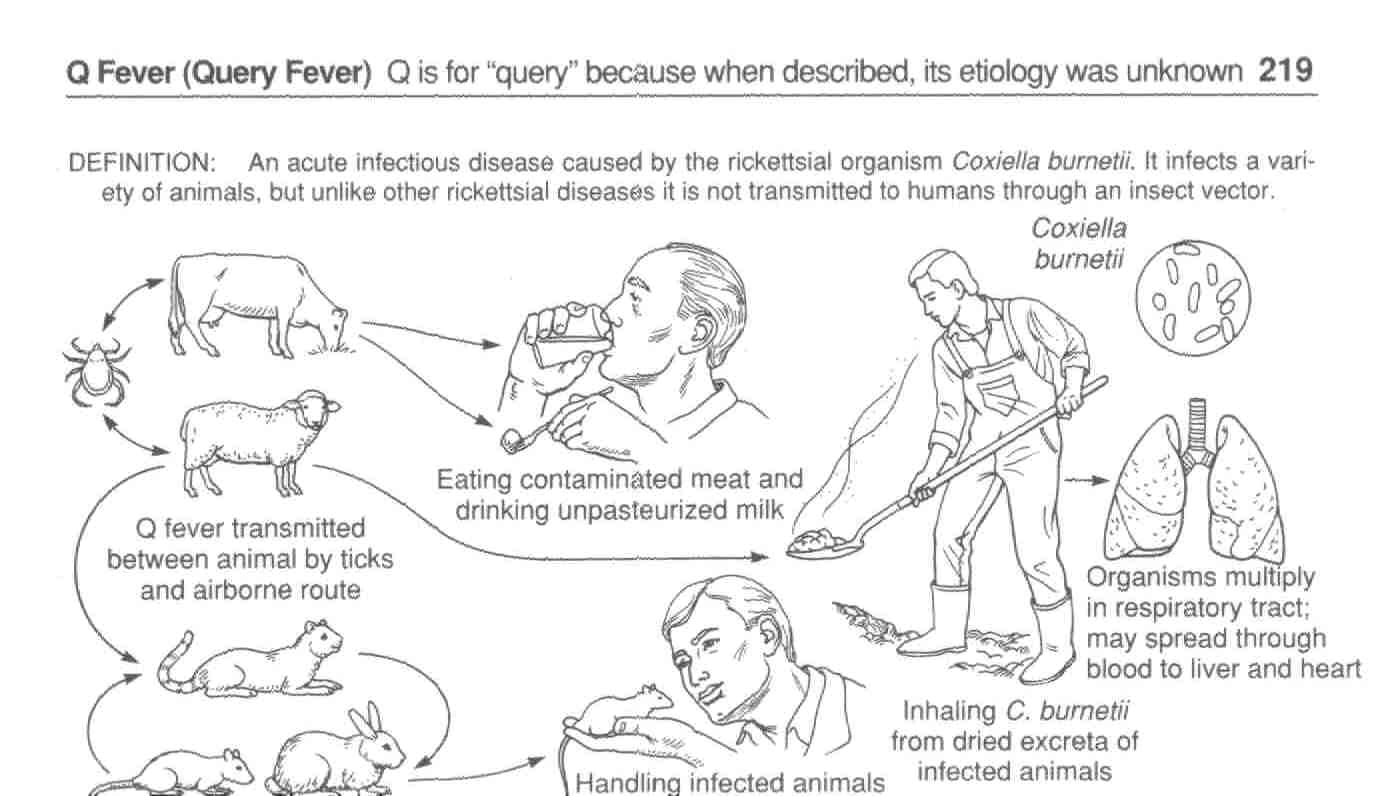
Are there specific foods that can help reduce fever?
While no specific foods can directly reduce fever, certain options can support the immune system and provide comfort. These include chicken soup (which may have anti-inflammatory properties), foods rich in vitamin C (like citrus fruits and berries), and probiotic-rich foods (such as yogurt) to support gut health. However, the most important factor is ensuring adequate hydration.
In conclusion, understanding fever in children involves recognizing its purpose as a natural immune response, accurately measuring and interpreting temperature, knowing when to seek medical attention, and providing appropriate home care. By dispelling myths and focusing on comfort and hydration, parents can effectively manage most fevers at home while supporting their child’s recovery process. Remember that each child and situation is unique, so when in doubt, consult with a healthcare professional for personalized advice.
Fever (High Temperature) In Kids (for Parents)
All kids get a fever from time to time. Usually, a fever isn’t dangerous or bad for kids. It can even be a good thing because it can help the immune system fight infection.
Still, parents might be unsure about how to handle a fever at home and when to call the doctor. Here are some tips.
What Is a Fever?
In general, a fever means the body’s temperature is 100.4°F (38°C) or higher. Different ways of measuring a temperature — rectal, armpit, ear, forehead, mouth — get a slightly different number, so the number that means a child has a fever is a little different too.
What Causes Fevers?
Fevers in kids are usually caused by an infection. A fever helps the body by stimulating the immune system to fight the infection. Doctors also think the higher temperature makes it harder for the germs to grow.
A few other reasons kids can have a fever:
Overdressing: Infants, especially newborns, may get fevers if they’re overdressed, wrapped in a blanket, or in a hot environment because they don’t regulate their body temperature as well as older kids. But because fevers in newborns can be a sign of a serious infection, even infants who are overdressed must be checked by a doctor if they have a fever.
But because fevers in newborns can be a sign of a serious infection, even infants who are overdressed must be checked by a doctor if they have a fever.
Immunizations: Babies and kids sometimes get a mild fever that lasts about a day after getting vaccinated.
A child who is teething might have a slight rise in body temperature, but it’s probably not the cause if the temperature is higher than 100°F (37.8°C).
When Is a Fever a Sign of Something Serious?
In most healthy kids who are acting well, a fever isn’t serious.
But a fever can be serious for:
- Infants younger than 3 months: If an infant younger than 3 months has a rectal temperature of 100.4°F (38°C) or higher, call your doctor or go to the emergency department right away.
- Kids with some health conditions: If your child has an ongoing health issue, make sure you know if the doctor should be called for fever.
A fever is probably not serious if your child is 3 months or older and:
- is still interested in playing
- is drinking well
- is alert and smiling
- has a normal skin color
- looks well when their temperature comes down
Don’t worry too much about a child with a fever who doesn’t want to eat. This is common with infections that cause fever. For kids who still drink and urinate (pee) normally, not eating as much as usual is OK.
This is common with infections that cause fever. For kids who still drink and urinate (pee) normally, not eating as much as usual is OK.
What Are the Signs of a Fever?
Kids with a fever might:
- feel warm
- act differently (they might be fussy or cranky, or quieter than usual)
- breathe a little faster or have a faster heart rate than normal
- have a headache
- have chills or sweating
- have red or flushed skin
For any of these signs, take your child’s temperature to know if they really have a fever.
If your child feels warm or is acting unwell, use a digital thermometer to confirm a fever. Different ways of taking the temperature are more accurate than others at measuring the true body temperature.
The best way to take a temperature:
- for kids 3 years old and younger: a rectal temperature
- for kids 4 or older who can cooperate: an oral temperature (by mouth)
- for any age: under the armpit (axillary) and temporal artery (forehead) are easiest but less accurate.
 Tympanic (in the ear) is OK for kids 6 months and older.
Tympanic (in the ear) is OK for kids 6 months and older.
It’s a fever when a child’s temperature is at or above one of these levels:
- rectal (in the bottom), tympanic (in the ear), or temporal artery (across the forehead): 100.4°F (38°C)
- oral (in the mouth): 100°F (37.8°C)
- axillary (under the arm): 99°F (37.2°C)
How Can I Help My Child Feel Better?
No treatment is needed if a child is still playing and drinking normally and doesn’t have pain.
Treating a fever with medicine isn’t needed if a child is still playing and drinking normally and doesn’t have pain. Give medicine only when a fever causes a child discomfort or keeps them from drinking.
While kids have a fever, keep an eye on them, help them to rest, and keep offering fluids to drink. They need to drink a little extra to make up for the fluids they lose from sweating.
Home Care Measures
Medicines
If your child is uncomfortable from a fever or not drinking fluids well, you can give one of these medicines:
- acetaminophen (such as Tylenol or a store brand)
or - ibuprofen (such as Advil, Motrin, or a store brand).
 Do not give to children under 6 months old.
Do not give to children under 6 months old.
Follow the package directions for how much to give and how often. If you don’t know the recommended dose or your child is younger than 2 years old, call the doctor to find out what to use and how much to give.
- If your child has any medical problems, check with the doctor to see which medicine to use.
- Unless instructed to by a doctor, never give aspirin to a child. Such use is linked to Reye syndrome, a rare but serious illness.
Do not give any medicine for fever to infants younger than 3 months old unless instructed to by a doctor.
Staying Comfortable
If your child has a fever:
- Have them wear lightweight clothing and stay covered with a light sheet or blanket. Heavy clothes and blankets can keep the body from cooling, which can make your child uncomfortable.
- Keep the room at a comfortable temperature — not too hot or too cold.

- Make sure they get plenty of rest. Staying in bed all day isn’t necessary, but a sick child should take it easy.
- They should stay home from school or childcare until their temperature has been normal for 24 hours.
Lukewarm sponge baths to lower a fever generally are not recommended. In fact, sponge baths can make kids uncomfortable from shivering. Never use rubbing alcohol (it can cause poisoning when absorbed through the skin) or ice packs/cold baths (they can cause chills that can raise body temperature).
Food and Drinks
Offer plenty of fluids to avoid dehydration because fevers make kids lose fluids faster than usual. Oral rehydration solutions (like Pedialyle, Enfalyte, or store brands) are a good choice. You also can give water, soup, ice pops, and flavored gelatin. Avoid drinks with caffeine, including colas and tea, which can make dehydration worse by making kids pee more often.
Let kids eat what they want (in reasonable amounts), but don’t force it if they don’t feel like eating much.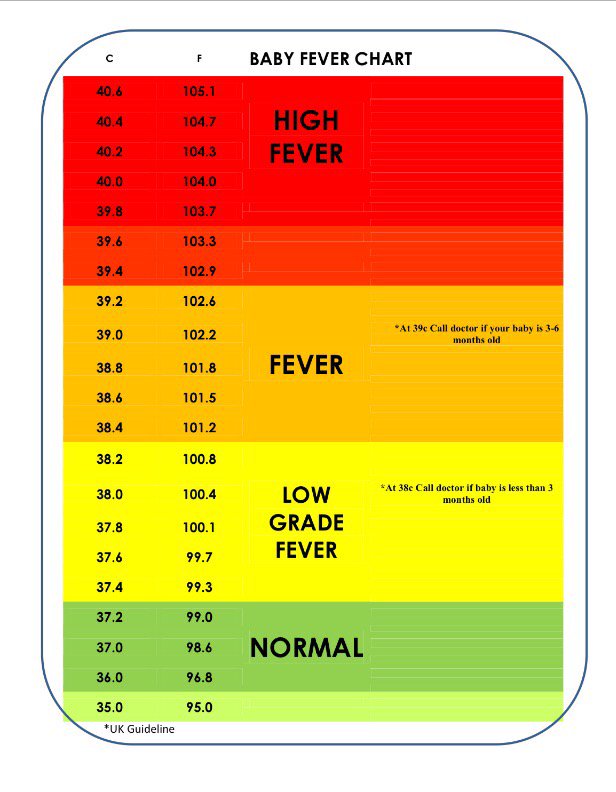
When Should I Call the Doctor?
The temperature that should trigger a call to the doctor depends on a child’s age, the illness, and whether they have other symptoms. You might ask if your doctor has specific guidelines on when to call about a fever.
In general, call the doctor if your child is:
- younger than 3 months old with a rectal temperature of 100.4°F (38°C) or higher
- 3 months or older with a temperature higher than 102.2°F (39°C)
- any age but has a health problem like cancer or sickle cell disease and has a fever
Also call if a child 3 months or older has a fever and:
- refuses fluids or seems too ill to drink enough
- has lasting diarrhea or repeated vomiting
- has any signs of dehydration (peeing less than usual, not having tears when crying, less alert and less active than usual)
- has a specific complaint (like a sore throat or earache)
- still has a fever after 2–3 days
- has a rash
- has pain while peeing
Get emergency care if your child shows any of these signs:
- crying that won’t stop
- extreme irritability or fussiness
- sluggishness and trouble waking up
- a rash or purple spots that look like bruises on the skin (that were not there before your child got sick)
- blue lips, tongue, or nails
- in an infant, the soft spot on the head seems to be bulging out or sunken in
- stiff neck
- severe headache
- limpness or refusal to move
- trouble breathing that doesn’t get better when the nose is cleared
- leaning forward and drooling
- seizure
- moderate to severe belly pain
What Else Should I Know?
All kids get fevers, and in most cases they’re back to normal within a few days.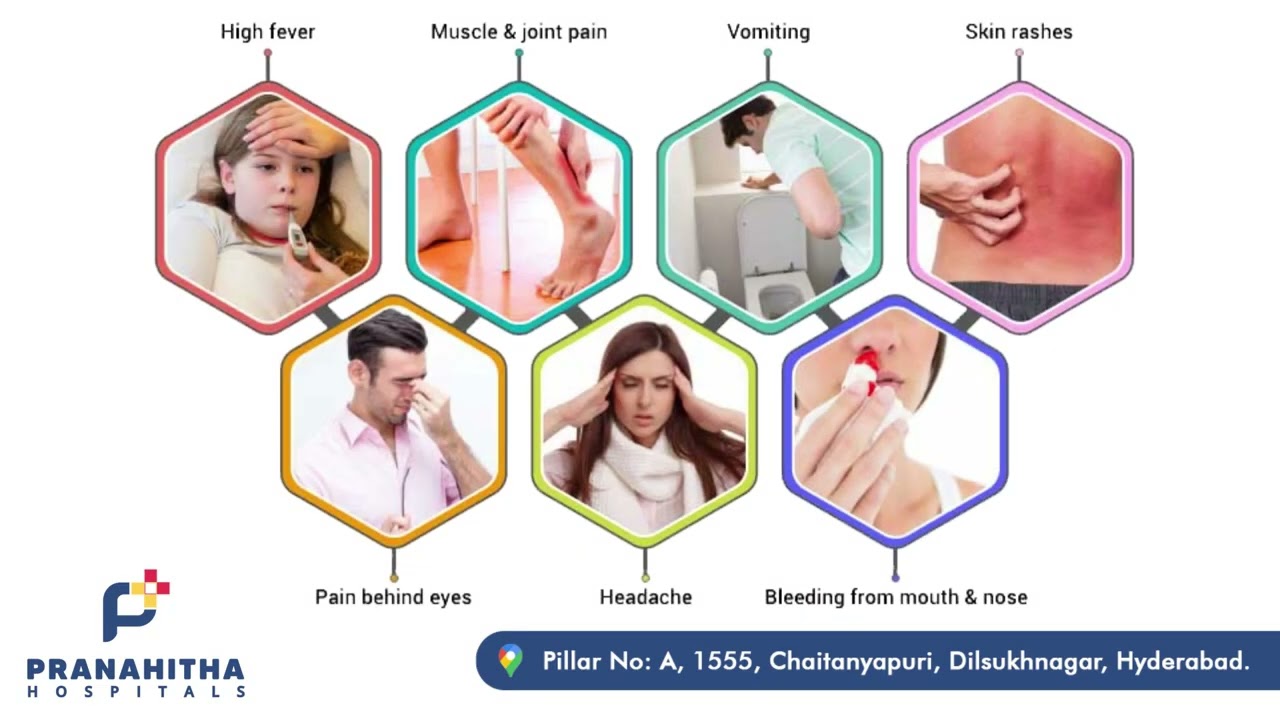 For older babies and kids, the way they act can be more important than the reading on your thermometer. Everyone gets a little cranky when they have a fever. This is normal and should be expected.
For older babies and kids, the way they act can be more important than the reading on your thermometer. Everyone gets a little cranky when they have a fever. This is normal and should be expected.
But if you’re ever in doubt about what to do or what a fever might mean, or if your child is acting ill in a way that concerns you even with no fever, always call your doctor for advice.
Reviewed by: Melanie L. Pitone, MD
Date reviewed: November 2022
Treat High Fever in Children and Adults
- Online Care
- Scheduled Care
- Locations
- Careers
- Pay My Bill
- Testimonials
Eagan, Woodbury and Vadnais Heights
Contact UsCareersFAQsUR Blog
The Urgency Room is your comprehensive one-stop location for your urgent needs. Our standalone facilities are expertly outfitted with emergency trained providers and state-of-the-art equipment to handle the variety of aches, pains, breaks, and illnesses that come through our doors every day.
Our standalone facilities are expertly outfitted with emergency trained providers and state-of-the-art equipment to handle the variety of aches, pains, breaks, and illnesses that come through our doors every day.
Schedule an appointment at any of our three locations, open 365 days a year, including holidays, from 8:00 AM to 9:00 PM. Our telehealth services are available from 8:00 AM to 8:00 PM. Situated in Woodbury, Vadnais Heights, and Eagan, The Urgency Room is the quick and convenient alternative to overcrowded and understaffed emergency rooms for residents throughout the Twin Cities.
If you or your child has a high fever, don’t hesitate to seek care. Don’t drudge through hours of waiting at your typical emergency room. Instead, get evaluated and treated at your nearest Urgency Room, fast. With short wait times, friendly staff, and highly experienced providers, you’ll be back to yourself in no time.
What Is Considered a High Fever in Adults?
Most adults have a baseline temperature of 98. 6 F. Generally, temperatures of 103 degrees Fahrenheit or higher are considered high for an adult. However, when an adult sustains a temperature higher than 100 degrees Fahrenheit for an unusually long period of time, it could also be cause for concern. It’s best to act on the safe side and seek care at The Urgency Room right away. Fevers can be very complex and can stem from many different types of illnesses or infections. The providers at The Urgency Room can accurately assess and diagnose the source of your high fever.
6 F. Generally, temperatures of 103 degrees Fahrenheit or higher are considered high for an adult. However, when an adult sustains a temperature higher than 100 degrees Fahrenheit for an unusually long period of time, it could also be cause for concern. It’s best to act on the safe side and seek care at The Urgency Room right away. Fevers can be very complex and can stem from many different types of illnesses or infections. The providers at The Urgency Room can accurately assess and diagnose the source of your high fever.
Fevers occur when the hypothalamus, your body’s “thermostat,” increases your body’s temperature because of fever-producing substances called pyrogens. When pyrogens are released into your blood, you could wind up with a dangerously high fever. Pyrogens could come from bacteria, drugs, toxins, viruses, and fungi. The severity of fever and its detrimental results increase as your condition persists—which is why getting a high fever treated sooner is always your best option.
High Fever Thresholds
Once a fever goes beyond the high level, an adult enters dangerous fever levels (104 F – 107 F). This dangerous level, also known as hyperpyrexia, is considered a medical emergency and you should seek medical care immediately.
To give you a rough idea of the fever levels in adults, here’s a list:
- Low high fever: 100 F – 101 F
- Intermediate high fever: 102 F
- Serious high fever: 103 F – 104 F
- Hyperpyrexia: 104 F – 107 F
It is sometimes difficult to pinpoint the source of a fever as there are an incredible number of diseases and illnesses that have high temperatures as a side effect or symptom. And while fevers most frequently accompany a viral illness, our providers will try and get down to the exact source.
What Is Considered a High Fever in Children?
A high fever in a child may be any temperature higher than 100 degrees Fahrenheit, especially if that temperature is sustained above the 100-degree threshold for extended periods. If your child’s temperature is not showing signs of reducing, you should seek emergency care.
If your child’s temperature is not showing signs of reducing, you should seek emergency care.
The severity and damage a fever can cause vary by the age of the child. Younger children and infants should be seen by a medical provider sooner than an adult or teenager would with a similar temperature.
In addition to high or rising temperatures that last longer than 24 hours, a child with a high fever could have other obvious symptoms. Be on the lookout for severe diarrhea, dehydration, repeated vomiting, seizures, or rash. Your child is especially susceptible to serious infections if they have any type of immune disorder or haven’t received immunizations.
When minutes matter, especially if your child has a high fever, get to your nearest Urgency Room—we have shorter wait times and state-of-the-art equipment to treat your illness fast.
When Is It Time to Seek Care?
As listed above, the duration one with a high fever should wait to seek medical treatment varies depending on age. An infant should be seen right away even if it has temperatures constituting a low fever in adults. Similarly, an adult can wait until the fever persists for a day or two while a child, depending on its age, should be seen as soon as they’ve had a fever of any temperature for longer than 24 hours.
An infant should be seen right away even if it has temperatures constituting a low fever in adults. Similarly, an adult can wait until the fever persists for a day or two while a child, depending on its age, should be seen as soon as they’ve had a fever of any temperature for longer than 24 hours.
You may try fever-reducing medicines (ones containing acetaminophen) before seeking medical care, however, always consult with a medical provider if you are uncertain what medicine to administer for your child.
Consider Using Telehealth for Less Intense Fevers
If you’re not experiencing a medical emergency but you’re concerned about your fever level or that of your child, consider using online care services. The Urgency Room utilizes video technology for patient convenience and overall experience improvement. You won’t have to waste precious time in your vehicle or using public transportation, not to mention waiting in the lobby. Just follow the instructions on our Online Care page.
How Can The Urgency Room Treat High Fevers in Adults and Children?
The Urgency Room is well-equipped to take care of you or your child when experiencing a high fever. Prolonged fever or dangerously high fevers can cause an onslaught of residual health problems, so it is always best to seek care rather than ignore the problem.
All three Urgency Room locations are equipped with providers and staff who have extensive emergency room experience as well as equipment to assess, diagnose and treat your illness or injury.
Up-to-date technology at our Urgency Room locations includes:
- X-ray machines
- CT scanner
- Ultrasound
- High-complexity lab
- Sedation for adults and children
The Urgency Room also has a large library of at-home aftercare videos for you to reference after you’ve left our in-person care. Before, during, and after illness, The Urgency Room has your well-being as our first priority.
Medical Care for a Wide Range of Symptoms, Available In-Person or Online
Looking for fast, trusted medical care in the Twin Cities? The Urgency Room can help you avoid the crowds and long waits of typical emergency rooms. Our facilities are owned and operated by members of the Emergency Physicians Professional Association. Our board-certified physicians and staff are here for you when you need medical care the most.
Our facilities are owned and operated by members of the Emergency Physicians Professional Association. Our board-certified physicians and staff are here for you when you need medical care the most.
We’ll always provide you with exceptional medical care closer to home. Schedule your non-emergent visits or log in online to start a visit with one of our providers online.
The temperature has risen. What you need to know
37.0 — is this already a disease? When should you take an antipyretic? Can heat kill? Why is it advised to eat less at a temperature? We analyze popular questions
Usually we consider a fever a sign of SARS, influenza or other infectious disease. However, it can also jump after vaccination, although there is no infection in the body. Deviations from the temperature norm have dozens of reasons. To understand why this happens, it is worth learning more about the thermoregulation of our body.
In 1851, the German physician and scientist Karl Wunderlich summarized the results of a million temperature measurements in the armpits of patients and for the first time established the normal limit of 37°C, or 98. 6°F. He also put into practice regular measurements of the temperature of patients and argued that fever (fever) is not the disease itself, but its symptom.
6°F. He also put into practice regular measurements of the temperature of patients and argued that fever (fever) is not the disease itself, but its symptom.
However, later studies revised Wunderlich’s estimate and reduced the rate to 36.6°C. This was due not so much to the scientist’s mistakes as to the improvement in the quality of life. Wunderlich lived in an era when the average life expectancy was 38 years, and many people suffered from chronic infections such as tuberculosis, syphilis and periodontitis. A high level of systemic inflammation in the body could lead to such a norm.
At the same time, the temperature norm also depends on the place of measurement: in the armpit – it is 36.6 ° C, in the anus and vagina – 37.5 ° C; in the mouth – 37.0 ° C. By the way, the axillary method is considered the least accurate, but it has entered hospital practice as the simplest and most hygienic. For example, in the United States at home, a thermometer is placed in the mouth. But not any thermometer is suitable for this, you need a special one.
No. The temperature depends on daily biological cycles (at night and in the morning it is lower than during the day and in the evening), physical and mental activity, emotional state (fear, stress), and ambient temperature. Also, temperature regulation is disturbed by drug and alcohol intoxication. A constant temperature of 37.2 ° C can be in women during the period of ovulation and in pregnant women. Therefore, it is important to measure the temperature, if possible, in a calm, unexcited state.
Without illness or other physiological disturbances, the temperature will not exceed 37.2°C. But then begins what experts call subfebrile (from the Latin febris – fever) temperature – from 37.2 to 37.8 or even 38.0 ° C. Usually she speaks of a sluggish inflammatory process, that the body is fighting infections, and other disorders.
Subfebrile temperature can be distinguished by other signs of the disease – weakness, headache, sweating and body aches.
Yes, but not only.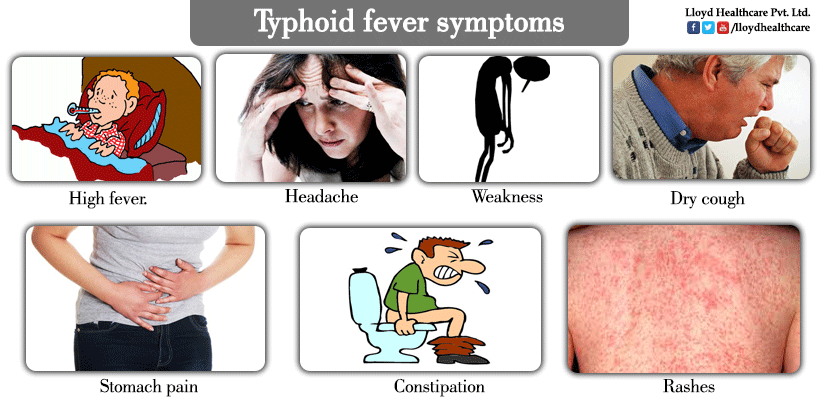 Subfebrile temperature can be observed in hundreds of different conditions. These can be various kinds of infections (for example, this is one of the symptoms of early tuberculosis), poisoning, dental diseases, allergic reactions, latent autoimmune diseases and chronic pathologies.
Subfebrile temperature can be observed in hundreds of different conditions. These can be various kinds of infections (for example, this is one of the symptoms of early tuberculosis), poisoning, dental diseases, allergic reactions, latent autoimmune diseases and chronic pathologies.
The temperature within these limits can also increase after receiving a dose of ionizing radiation of 2 to 4 Gy, against the background of hormonal changes in women during menopause. With prolonged or very acute stress, the body can also respond with an increase in temperature – this condition is called psychogenic fever, or thermoneurosis.
It is worth noting that such a temperature in itself does not harm the body. It is simply a tool the body uses to deal with real or imagined threats. For example, an increase in temperature after vaccination is considered a variant of the norm: the body thinks that it is being attacked, and just in case, it “alarms” all defenses.
Infectious agents such as viruses, bacteria and fungi do not live comfortably at certain temperatures. Let’s say 37.0 is already above the average annual temperature of any place on Earth, including the Sahara and the South American tropics. And the higher the column crawls, the worse it is for microorganisms. For example, biologist Arturo Casadevall studied the temperature preferences of 4,082 species of lower fungi. It turned out that less than a third survive at temperatures above 37°C, and only five percent grow at 41°C.
Let’s say 37.0 is already above the average annual temperature of any place on Earth, including the Sahara and the South American tropics. And the higher the column crawls, the worse it is for microorganisms. For example, biologist Arturo Casadevall studied the temperature preferences of 4,082 species of lower fungi. It turned out that less than a third survive at temperatures above 37°C, and only five percent grow at 41°C.
An increase in temperature is an element of non-specific (aimed at a wide range of threats) immunity. The hypothalamus, located at the base of the brain, is responsible for temperature regulation. It responds to signals from biochemical substances floating in the blood, called pyrogens (from other Greek πῦρ – “fire”). At elevated temperatures, metabolic processes are faster, and therefore the action of immune cells is accelerated.
Pyrogens are secreted mainly by cells of the immune system (monocytes, macrophages, T- and B-lymphocytes). When the hypothalamus detects them, it tells the body to generate and retain more heat, causing a fever. In children, the temperature usually rises faster because their immune system is still immature.
In children, the temperature usually rises faster because their immune system is still immature.
It should be said right away that mercury thermometers in Russia have been banned for production since 2020. This is due to the fact that in 2014 Russia signed the Minamata Convention on Mercury, which requires the production, export and import of goods containing mercury and mercury compounds to be stopped.
The advantages of mercury thermometers are their high accuracy (0.1°C error) and reliability. Mercury expands itself due to heat, does not require batteries and microcircuits. But these benefits are outweighed by the health risks posed by mercury vapor from a broken appliance.
Electronic thermometers are more “capricious”, although formally their accuracy is the same. They use a thermal sensor, so they need to be pressed closer to the body – and it is best to measure them orally or rectally. If you do not change the battery in time, the device will begin to “lie”.
But infrared thermometers have lower accuracy. This is due to the fact that the measuring beam passes through the air, which has its own temperature, and this distorts the result (up to 0.2°C). But it gives the result in a matter of seconds, and is convenient when you need to identify a febrile temperature.
A medical thermometer usually ends at 45°C. At 42°C, irreversible decomposition of proteins in the body begins, at 43°C, denaturation (thermal decay) of proteins in brain neurons, which leads to inhibition of brain functions, coma and death.
But even a temperature above 38°C (it is called febrile) is already quite difficult for the body. Blood pressure rises, heart rate rises, the number of decay products of bacteria in the blood increases, which can cause symptoms of poisoning and disrupt brain function (hence hallucinations).
Consequences of prolonged fever may include fainting, heart and kidney failure, dehydration, digestive and nervous system disorders.
As we found out, the temperature helps to fight the disease. Therefore, doctors usually advise taking antipyretics only when the temperature exceeds 38-38.5 ° C. But it depends on the state of the person himself, on how he tolerates the fever. In this case, an overdose of the drug can cause serious damage to the liver, kidneys, gastrointestinal tract, heart and brain.
If the fever is due to hormonal causes, such as hot flashes during menopause or a thyroid disorder (hyperthyroidism), these medicines will not work. In such cases, cooling treatments such as rubbing with a damp towel or bathing in cool water help.
As far back as the 1574 dictionary of John Whizels, it was noted that “fasting is an excellent remedy for fever.” But if the recommendation to drink more fluids has an obvious explanation (replenish fluid balance and remove the breakdown products of pathogens from the body), then what about the advice to eat less?
On the one hand, to maintain a high temperature, the body needs additional energy, which it can get from food. Fasting also creates additional stress. On the other hand, overeating and eating too spicy, unusual, unfamiliar foods can be harmful. The body may misinterpret certain substances as allergens and provoke a reaction.
Fasting also creates additional stress. On the other hand, overeating and eating too spicy, unusual, unfamiliar foods can be harmful. The body may misinterpret certain substances as allergens and provoke a reaction.
Such a method exists. For example, in the middle of the 20th century, the German physician von Ardenne began to use it on cancer patients as a means of “last hope”. The fact is that cancer cells die at temperatures close to 42°C. Von Ardenne was able to heat patients up to 41.8°C. True, no more than 17% of them survived, but they were cured.
The “water” method was used for heating. The patient was placed in a special bath and with the help of water-jet devices placed over the patient, and poured over with heated water. Body temperature should have risen to 42-43°C. This procedure lasted about 6 hours under general anesthesia. The head was cooled with a special helmet. Later in the USSR, the idea of heating with microwaves was developed.
Hyperthermia can help treat cancers that are difficult to operate on (eg, brain, mouth, and neck tumors). Heated tissues are more sensitive to ionizing radiation, which increases the effectiveness of radiotherapy. The problem is that it is not yet possible to concentrate the source of thermal radiation exactly at the site of the tumor without affecting other tissues.
Heated tissues are more sensitive to ionizing radiation, which increases the effectiveness of radiotherapy. The problem is that it is not yet possible to concentrate the source of thermal radiation exactly at the site of the tumor without affecting other tissues.
Nevertheless, in recent years, the interest in therapeutic hyperthermia among scientists has been growing due to the development of new technologies. For example, one of the recent ideas involves the use of magnetic nanoparticles that can be injected directly into tumor tissue and heated from the inside using an alternating magnetic field.
Russia has developed a new material for filtering radioactive water
The product consists of a sorbent and carrier
Read more
Temperature 39.3°C in adults and children
Rinza®
>
Colds and flu
>
About temperature
>
What do at a temperature of 39 ° C?
>
Temperature 39.3 °C
art_temperature_39-3c. png
png
Temperature 39.3 °C
26.06.2023
9 0096
56 594
8 minutes
Author, editor and medical expert
Klimovich Elina Valerievna.
Editor
Harutyunyan Mariam Harutyunovna
Contents:
- 3 °С in children
- What is dangerous temperature 39 .3 °C?
- Temperature of 39.3°C without symptoms: possible causes
- What should I do if the temperature of 39.3°C does not go away for a long time (2, 4 or more days)?
Contents of the articlePossible causes of a temperature of 39.3 °C in adultsCauses of a temperature rise to 39.3 °C in children 3 °C does not last long (2, 4 or more days)?
An increase in body temperature (hyperthermia) is a protective reaction of the body to the penetration of viruses, bacteria, the development of an inflammatory process 1.2 . In this state, it is recommended to conduct bed or semi-bed rest, not to overcool and follow all medical recommendations 3 . Hyperthermia can occur suddenly, against the background of minor external manifestations. And many people simply do not know what to do at a temperature of 39.3 ° C, so as not to harm their health and not aggravate their situation. The main thing is not to panic. If the temperature on the thermometer is 39.3 ° C, then you need to contact a specialist as soon as possible. Self-medication can lead to serious complications.
Hyperthermia can occur suddenly, against the background of minor external manifestations. And many people simply do not know what to do at a temperature of 39.3 ° C, so as not to harm their health and not aggravate their situation. The main thing is not to panic. If the temperature on the thermometer is 39.3 ° C, then you need to contact a specialist as soon as possible. Self-medication can lead to serious complications.
What to do at 39°C
What to do at 39.1°C
What to do at 39.2°C
What to do at 39.3°C
What to do at 39.4°C
What to do at 39.5°C
What to do at 39 .6°C
What to do at 39.7°C
What to do at 39.8°C
What to do at 39.9°C
Possible causes of 39.3°C in adults
Viral infections. Viruses are the most common cause of fever up to 39.3 °С. Diseases caused by such pathogens, in most cases, occur with high body temperature, runny nose, cough, chills, muscle aches, which occurs in response to the release of toxins by microorganisms that actively multiply in the body of an adult during the development of acute respiratory infections, influenza, parainfluenza and other similar diseases.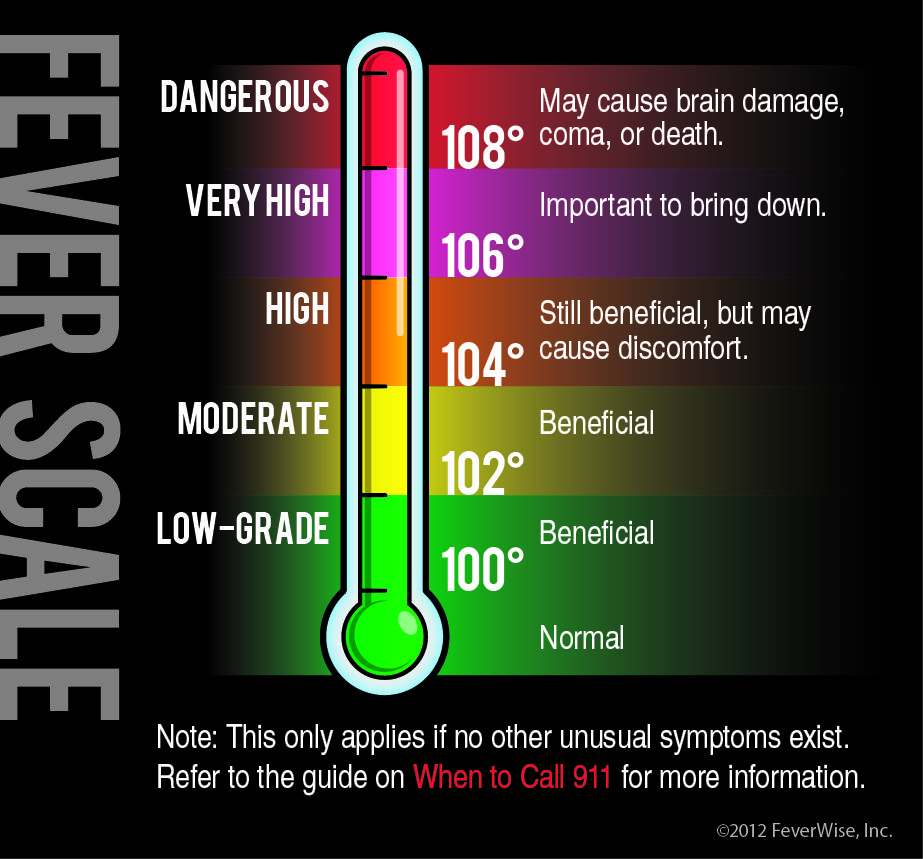 diseases 3,4,5 .
diseases 3,4,5 .
Exacerbation of chronic ENT diseases and pathologies of the respiratory tract. Diseases such as laryngitis, tonsillitis, sinusitis, bronchitis, in a chronic form, can often recur against the background of hypothermia or the development of respiratory viral diseases 3.5 .
Intestinal infections. A temperature of 39.3 °C in an adult may occur against the background of active reproduction of infectious pathogens that affect the gastrointestinal tract 3.4 . In this case, hyperthermia is accompanied by diarrhea, abdominal pain, and vomiting is also possible.
Inflammation of the joints. In adults, high body temperature is often diagnosed against the background of exacerbation of arthritis and other diseases of the articular tissues. Patients complain of general malaise, muscle pain, limited mobility in the diseased joint. The skin over it turns red and becomes hot to the touch 4 .
Causes of fever up to 39.3 ° C in children
An increase in temperature in a child up to 39.3 ° C and above frightens parents who do not know what to do and how to deal with such a condition. It is important to understand that hyperthermia in childhood can lead to dangerous complications, up to respiratory arrest 2 . Therefore, in no case should you self-medicate, but you should show the child to a qualified specialist. The doctor will conduct an examination, prescribe laboratory tests and other diagnostic methods, the results of which can make an accurate diagnosis and select an effective treatment.
Common causes of fever over 39 °C in childhood:
- flu. The disease is based on a viral infection, which is accompanied not only by hyperthermia, but also by severe headaches, muscle aches, and in young children often also nausea and vomiting;
- rhinovirus infection. It occurs against the background of an acute respiratory disease provoked by a rhinovirus, which causes a severe runny nose, nasal congestion and short-term fever with fever;
- intestinal flu (rotavirus infection).
 The causative agent is rotavirus, which causes symptoms of enteritis and gastroenteritis, damages the cells of the small intestine, causing vomiting and diarrhea in the child;
The causative agent is rotavirus, which causes symptoms of enteritis and gastroenteritis, damages the cells of the small intestine, causing vomiting and diarrhea in the child; - ENT diseases. In childhood, viral infections are often complicated by laryngitis, sinusitis, otitis media, causing a temperature rise above 39 ° C;
- overheating of the body or prolonged crying sometimes causes a short-term increase in body temperature in young children;
- Teething can also cause high body temperature, and hyperthermia occurs not only in infants, but also in preschoolers and schoolchildren when changing milk teeth to permanent ones 1,2,3 .
What should I do if the temperature
39.3 °C does not pass for a long time?
Why is 39.3 °C dangerous?
Temperatures above 39°C are dangerous for both children and adults 1.2 . It can lead to irreversible consequences in the central nervous system, dehydration of the body and disruption of the cardiovascular system 1. 2 . Against the background of hyperthermia, blood viscosity often increases, which can provoke thrombus formation 2 .
2 . Against the background of hyperthermia, blood viscosity often increases, which can provoke thrombus formation 2 .
A high body temperature is especially dangerous for a child. Children, due to their age and mental characteristics, cannot clearly talk about their feelings. If a child is sick, he needs to measure his body temperature several times a day so as not to miss its sharp increase. Against the background of severe hyperthermia in childhood, convulsions and respiratory disorders often occur 1,2,5 . In such cases, it is mandatory to take special antipyretic drugs for children, approved for a child of a certain age. 1.5 .
The temperature of 39.3 °C must be brought down
Experts recommend not to bring down the body temperature if it is below 38 °C in children and below 38.3 °C in adults 2 . But it must be taken into account that each organism is individual, and if the state of health worsens against the background of even a slight hyperthermia (up to 38 ° C), then, as prescribed by a specialist, it is worth taking an antipyretic agent that has a complex effect, including reducing muscle aches and headache 3 .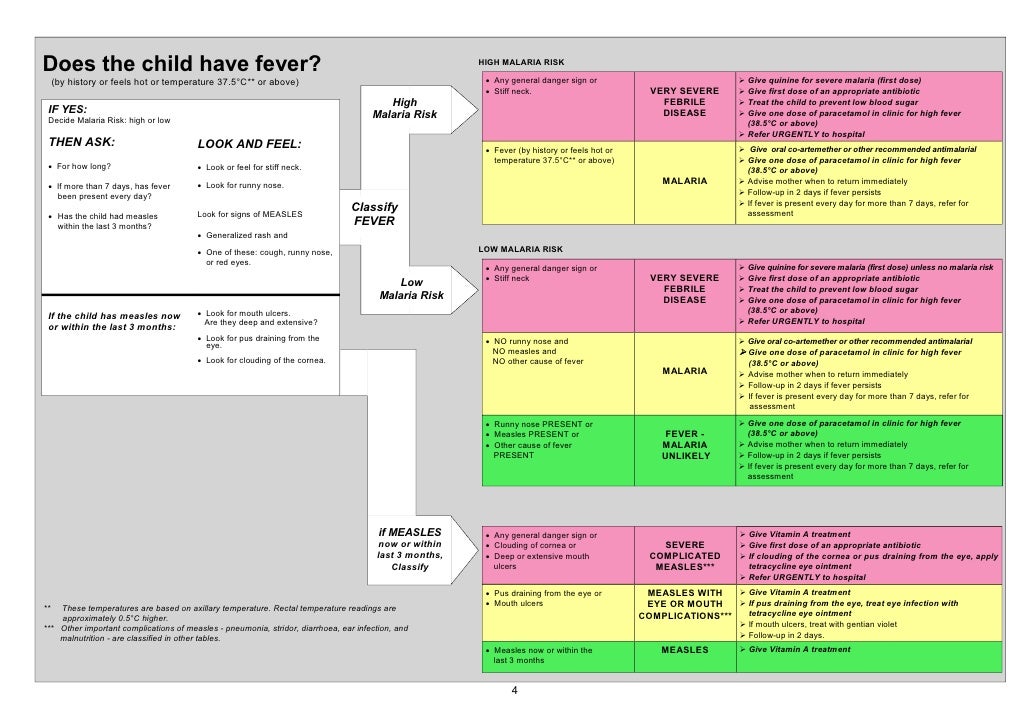
Children have a particularly hard time with high body temperature. Against the background of hyperthermia, they may experience vomiting and diarrhea, severely reduced appetite and disturbed sleep 5 . Experiments with drugs in childhood can be a direct threat to the child’s life. Medicines should be prescribed by a pediatrician.
Temperature of 39.3 °C without symptoms: possible causes
The appearance of a high body temperature without symptoms of a specific disease is very frightening and confusing. If such a condition recurs periodically, it is necessary to undergo a comprehensive diagnosis of the body as soon as possible in order to find out the true causes of hyperthermia 4.5 .
Infectious diseases at an early stage can sometimes be accompanied by only an increase in body temperature – without other symptoms. Additional symptoms appear later, after a few days. You may feel slightly unwell and your body temperature rises above 38°C. And only after 1-2 days there are such symptoms as a runny nose, nasal congestion, cough, redness of the throat 3 .
And only after 1-2 days there are such symptoms as a runny nose, nasal congestion, cough, redness of the throat 3 .
Some chronic diseases are almost asymptomatic, against the background of a short-term increase in body temperature 4 . To make an accurate diagnosis and prescribe treatment, it is necessary to conduct an examination and obtain test results. The person himself may not notice the manifestations of viral or bacterial infections, requiring not only the intake of antipyretics, but also other medications.
An increase in body temperature without symptoms of a viral infection is possible in childhood during teething. The child tries to scratch his gums, is naughty, sleeps badly and refuses to eat. Diarrhea may occur.
High body temperature disrupts the course of internal biochemical reactions, negatively affects the functioning of the nervous and cardiovascular systems 1.2 . In order to prevent the development of complications and adverse effects of hyperthermia, it is recommended to take antipyretics, which are graded by age and are available for adults and children separately 1,3,5 .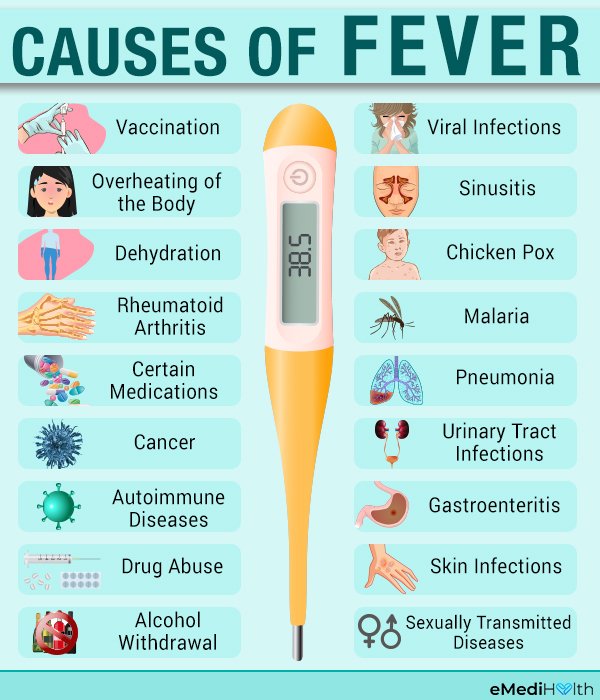 Do not give your child drugs intended for adults, even if the temperature of 39.3 ° C does not go astray. In this case, it is advisable to call an ambulance without taking rash independent actions.
Do not give your child drugs intended for adults, even if the temperature of 39.3 ° C does not go astray. In this case, it is advisable to call an ambulance without taking rash independent actions.
What should I do if the temperature of 39.3 °C does not go away for a long time (2, 4 or more days)?
To reduce high fever, many parents choose RINZASIP® multi-symptom for children, which does not contain glucose and is approved for use from 6 years of age 6 . The product has a raspberry flavor. Children like it, and they are happy to take sweet medicine at a temperature and signs of a viral disease. The drug allows you to reduce the manifestations of a cold, eliminates muscle pain 6 .
Adults and adolescents over 15 years of age can take RINZASIP® with Vitamin C, which not only fights fever and discomfort, but also provides additional immune support due to the content of vitamin C 7 .
The information in this article is for reference only and does not replace professional medical advice.

 Tympanic (in the ear) is OK for kids 6 months and older.
Tympanic (in the ear) is OK for kids 6 months and older. Do not give to children under 6 months old.
Do not give to children under 6 months old.
 The causative agent is rotavirus, which causes symptoms of enteritis and gastroenteritis, damages the cells of the small intestine, causing vomiting and diarrhea in the child;
The causative agent is rotavirus, which causes symptoms of enteritis and gastroenteritis, damages the cells of the small intestine, causing vomiting and diarrhea in the child;